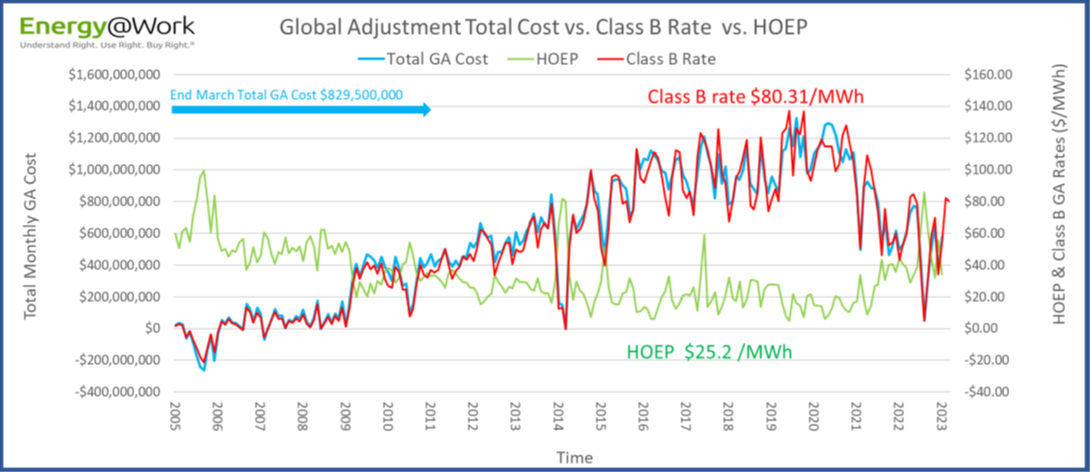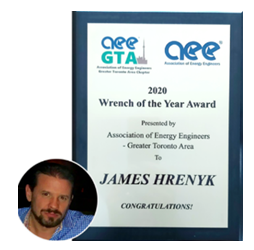Through the IESO, Energy@Work has been approved as an Existing Building Commissioning (EBCx) provider! We are excited to be able to implement projects through the 2023 EBCx incentive program, expected in June 2023.
Why?
EBCx offers clients an opportunity to achieve utility savings through a proven process which, NRCan suggests, can result in savings between 8 to 15%
The EBCx program is unique by offering upfront funding as well as
incentive to reduce electricity use, and
an incentive to sustain savings
EBCx uses NRCan’s 4-Phase approach that goes beyond trial and error to uncover root cause issues
Interested in sustained savings to support Environmental, Social and Governance (ESG) objectives?
Get in touch with us through Requests@Energy-Efficiency.com or
learn more from our web site www.Energy-Efficiency.com
Energy@Work is committed to helping operationalize ESG through proven programs that yield results that can be Measured and Verified (M&V) to Efficiency Valuation Organization’s (EVO) IPMVP.
Information on the EBCx program is available from the IESO website:
https://saveonenergy.ca/For-Business-and-Industry/Programs-and-incentives/Existing-Building-Commissioning-Program
Energy@Work presented at the BOMA Toronto Global Adjustment (GA) workshop on April 28th. The workshop outlined the intricacies of the GA and the importance in making the right decision on June 15th as well as the second decision on June 16th.
The June 15th GA decision is for Ontario electricity customers that have an average monthly demand over 1,000 kW to determine their GA rate structure for the upcoming year, i.e., Decision #1!
The next decision is to decide what strategy is needed to maximize saving, i.e., Decision #2.
June 15th has 2 Options:
To be billed as Class A, based on the building’s Peak Demand Factor (pdf)
To be billed as Class B, based on fixed monthly $/kWh rate
The workshop recording is available online if you missed it:
The decision is not automatic and should be thought out carefully. It is essential to notify your local distribution company of your decision on June 15th if you want to be billed Class A.
The best option depends on:
i) historical consumption and demand profiles, as well as
ii) predicted electricity use
The right choice can be the difference of hundreds of thousands of dollars.
Contact Energy@Work to Help with Your June 15th Decision and Strategy for the Year!
The IETC conference, held this year in Houston, Texas, is a great opportunity for industries leaders to meet and connect with each other.
Topics include innovative technologies, smart manufacturing, corporate energy management, energy monitoring and analysis. Case studies are shared for successful, real-world efficiency projects. Energy@Work has been a program advisor for over 10 years and speaks highly of the program and the speakers, who share their real-world experience.
Energy@Work’s Scott Rouse will present on two important topics:
1. Environmental, Social and Governance (ESG)
The importance of operationalizing ESG through Energy Efficiency, as well as avoiding Greenwashing accusations through proper Measurement and Verification, such as Efficiency Valuation Organization’s (EVO) IPMVP.
2. Lesson Learned from a successful Treasure Hunt
Energy@Work arranged a treasure hunt to identify energy efficiency measures. Facility staff were engaged in reviewing their operations after analyzing utility use with suggested best practices. The result was the identification of savings valued at $170,000, largely through operational activities. Funding was also arranged.
The IETC is a great conference for energy managers and registration is open- we’d love to see you there:
Awareness surrounding Environmental, Social and Governance (ESG) has grown exponentially in the last several years. Now a new obstacle stands in the way of developing an ESG strategy- anti-ESG backlash.
In early May, Florida’s governor, Ron De Santis, signed a bill that bans the investment of state funds into ESG. ESG bonds are also banned. De Santis claims the focus should be on maximizing returns rather than a focus on climate change and corporate diversity, ignoring the correlation between ESG and capital investment success. Ratings agencies expressed worry for the future, as weather and climate risks can no longer be accounted for- especially prevalent in Floridian areas that are hurricane-prone.
In light of this disheartening report, Energy@Work spoke with Sara Keyes, CEO of ESG Global Advisors, to get her take:
”Institutional investors are focused on policy – not politics. Companies need to pay attention to their current and prospective investors’ requests for ESG information as they believe it impacts their long-term risk-adjusted portfolio returns. The reason long-term investors, such as pensions, are focused on ESG risks and opportunities is to maximize risk-adjusted returns – therefore the rhetoric that ESG investing is ‘woke capitalism’ simply does not hold when you look under the hood of these investment strategies.”
When done properly, meaning with verifiable results disclosed, an ESG strategy has proven to have an excellent return on investment, as was highlighted in MarketWatch’s December article:
“Infosys research found that a 10-percentage-point increase in ESG spending correlated to a 1-percentage-point increase in profit growth. This occurred relatively quickly: 41% of respondents surveyed said they experienced a return on their ESG investment within a two- to three-year window.”
https://www.marketwatch.com/story/climate-change-and-diversity-efforts-are-profitable-report-says-heres-how-much-11670616651
Under the Reporting of Energy Consumption and Water Use regulation, buildings over 50,000 SqFt are required, by law, to report. Report your building’s annual energy and water use to comply with O.Reg 506/18. More importantly, EWRB offers the benefits from benchmarking and knowing your consumption.
Energy and water is a significant and controllable operating cost. Reporting provides an opportunity to identify opportunities for energy efficiency, track usage and compare how your building stacks up to similar buildings.
Contact Energy@Work to assist with your 2023 EWRB reporting!
In April 2023, GA cost was $0.87 billion. This is a 6% increase from March 2023 GA ($0.830 billion) and a 6% increase comparing April 2023 with February 2023 GA ($0.825 billion).
If we compare April 2023 with April 2022, there was a 20% increase.
If we compare March 2023 ($0.830 billion) with March 2022 ($0.616 billion) a 35% increase!
With drastic GA cost changes monthly, Energy@Work continues to ask “why?”. We provide a monthly review of GAM costs however the reason for the vast cost fluctuation remains unclear.
Energy@Work’s services includes a “GAM coach”. We maintain the importance of a GAM Strategy for Class A and Class B to win the (GAM)e.
Our collective savings have exceeded $10 million, and we look forward to continuing to assist.
BOMA Toronto’s annual COE Gala took place on May 25th, 2023. The gala recognizes industry leaders and properties that achieved BOMA BEST certification.
Awards were given to those that demonstrated excellence in the following categories:
Earth Hour Weekend Challenge Awards
Earth Awards
Pinnacle Awards
Certificates of Excellence
TOBY Awards
We would like to make special mention to:
Congratulations to all winners! Recognition for your efforts is well deserved!
Top Safety Tips for bicyclists and motorists:
Never ride or drive distracted.
Always expect the unexpected.
Always wear a bicycle helmet when on a bicycle and a seat belt when in a vehicle.
Know the Rules of the Road - A bicyclist is considered a vehicle on the road with all the rights and responsibilities of motorized traffic.
Share the Road - Both motorist and bicyclist should look out for each other and show mutual respect.
+ Lock up your bike!
As a 2-time winner of the Toronto Bicycle Friendly Business award, we are passionate about cycling- and safety is always #1!





































































